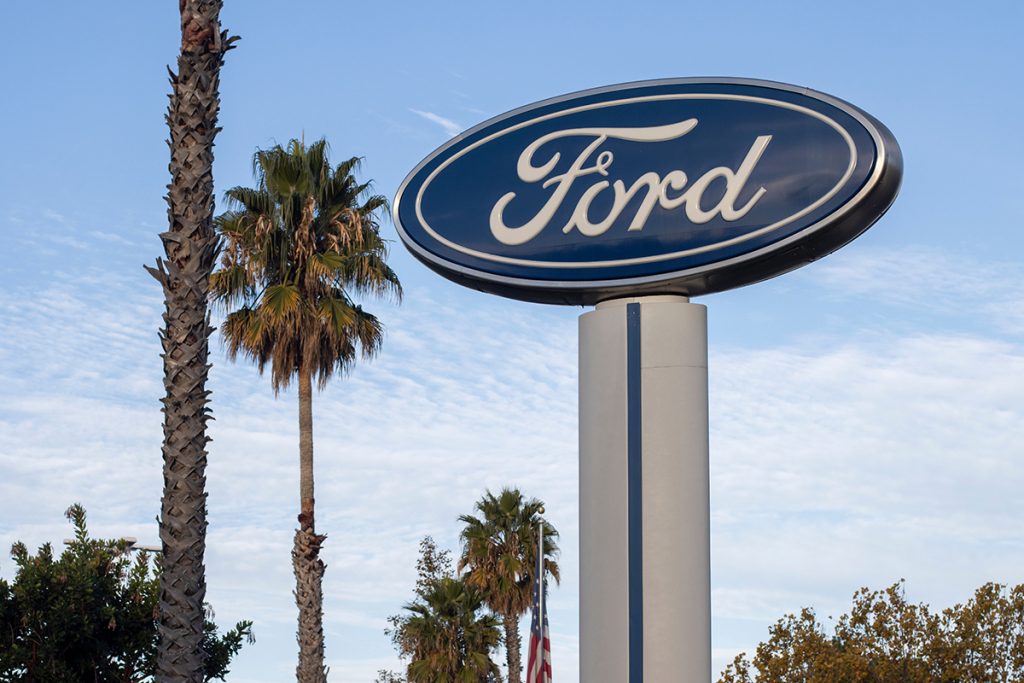Ford Motor Company has announced significant changes to its electric vehicle (EV) strategy, reflecting the challenges and realities of the evolving automotive market. The company is delaying the production of its next-generation all-electric pickup truck at a new plant in Tennessee and has decided to cancel plans for a three-row electric SUV. These decisions mark a strategic pivot as Ford realigns its focus on hybrid models and electric commercial vehicles, aiming for a more profitable and capital-efficient future.
The production delay affects a highly anticipated full-size electric pickup truck, originally set to roll off the assembly line at Ford’s new $5.6 billion Tennessee plant next year. This site, currently under construction, will now begin vehicle production in 2027, starting with the full-size pickup. Alongside this, Ford is developing a midsize electric truck, spearheaded by a specialized team in California. This shift underscores Ford’s decision to prioritize areas where it has a competitive edge—namely, commercial land trucks and SUVs.
In addition to these adjustments, Ford has revealed plans to introduce a new electric commercial van by 2026, which will be assembled at its Ohio Assembly Plant. This move highlights the company’s commitment to strengthening its position in the commercial vehicle market, which it sees as crucial to maintaining profitability in the electric vehicle segment. Ford’s strategic pivot is driven by market insights and customer preferences, particularly the demand for more electrification choices within the commercial and hybrid vehicle sectors.
The decision to cancel the three-row electric SUV is a significant change in Ford’s product lineup. This move will result in a special noncash charge of approximately $400 million due to the write-down of certain product-specific manufacturing assets. Additionally, the company anticipates further expenses and cash outlays of up to $1.5 billion as a result of these changes. These costs will be reflected as special items in the quarter in which they occur.
This shift in strategy also involves a change in Ford’s capital expenditure plans. The company will reduce its investment in all-electric vehicles from 40% to 30% of its future capital expenditures. This decision indicates a more cautious approach to the electric vehicle market, acknowledging the slower-than-expected adoption rates and the challenge of producing these vehicles profitably. While this may slow Ford’s initial push into the EV market, the company remains committed to its electrification goals, albeit with a refined focus on areas that promise greater returns.
Despite these shifts, Ford remains dedicated to its current all-electric models, such as the Ford Mustang Mach-E crossover and the F-150 Lightning pickup truck. The company plans to continue production and updates for these vehicles, ensuring that they remain competitive in the rapidly changing EV landscape.
Ford’s changes come as the automotive industry faces broader challenges in EV adoption and profitability. Many automakers have struggled to produce electric vehicles at a profit, leading to strategic reassessments across the industry. Ford’s new approach reflects its desire to be nimble and responsive to market conditions, balancing innovation with financial prudence.
The company has also indicated that it will provide investors with an update on its electrification strategy, technology developments, profitability targets, and capital requirements in the first half of 2025. This forthcoming update is expected to offer more detailed insights into Ford’s long-term plans and how it intends to navigate the complexities of the electric vehicle market.
Ford’s latest moves mark a significant realignment of its electric vehicle strategy, focusing on profitability and competitive advantage in the commercial vehicle sector. While the delay in the Tennessee plant’s production and the cancellation of the three-row SUV are notable, these decisions are part of a broader effort to ensure Ford’s long-term success in the evolving automotive landscape.


